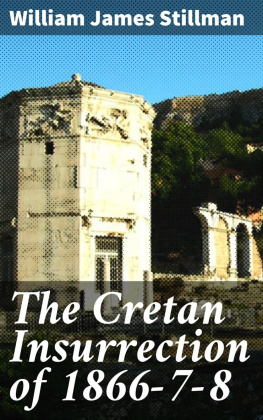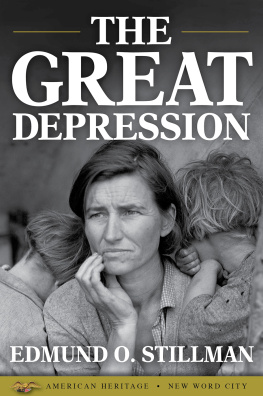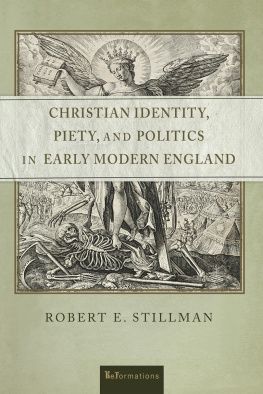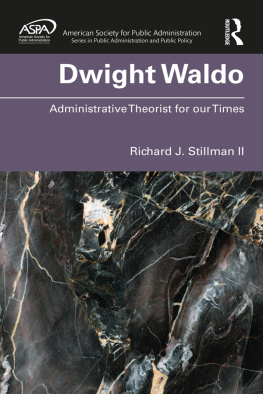The Last Amateur
The Last Amateur
The Life of William J. Stillman
Stephen L. Dyson
Cover image of William J. Stillman from a drawing by his daughter, Lisa Stillman, in 1900.
Published by State University of New York Press, Albany
2014 State University of New York
All rights reserved
Printed in the United States of America
No part of this book may be used or reproduced in any manner whatsoever without written permission. No part of this book may be stored in a retrieval system or transmitted in any form or by any means including electronic, electrostatic, magnetic tape, mechanical, photocopying, recording, or otherwise without the prior permission in writing of the publisher.
Excelsior Editions is an imprint of State University of New York Press
For information, contact State University of New York Press, Albany, NY
www.sunypress.edu
Production by Diane Ganeles
Marketing by Kate Seburyamo
Library of Congress Cataloging-in-Publication Data
Dyson, Stephen L.
The last amateur : the life of William J. Stillman / Stephen L. Dyson
pages cm
Includes bibliographical references and index.
ISBN 978-1-4384-5261-6 (hardcover : alk. paper)
1. Stillman, William James, 18281901. 2. Stillman, William James, 18281901Travel. 3. JournalistsUnited StatesBiography. 4. PhotographersUnited StatesBiography. 5. Art criticsUnited StatesBiography. 6. PaintersUnited StatesBiography. 7. United StatesIntellectual life19th century. I. Title.
CT275.S747D97 2014
070.92dc23
[B] | 2013036276 |
10 9 8 7 6 5 4 3 2 1
Contents
Illustrations
Acknowledgments
This biography has been long in the making, and I owe thanks to many people. First I must acknowledge the staff of Special Collections at Union Colleges Schaeffer Library and especially to its director Ellen Fladger. Not only did she provide me with easy access to the extensive Stillman archives but she also often suggested sources and directions for my research. It was an ideal environment in which to complete this study.
I owe a great debt to other archives as well. The archival staff at Houghton Library, Harvard University provided me with access and guidance to the Charles Eliot Norton papers. To the staff of the Division of Rare Books and Manuscripts of the Cornell University Library and especially to Patrick Joseph Stevens I owe a debt of gratitude for access to and assistance with the Daniel Willard Fiske papers. The archivists of The Times of London and especially Eamon Dyas were most helpful as I researched their holdings of correspondence of Stillman with various editors of The Times. Thanks are due to the Boston staff of the Archaeological Institute of America for access to their archival holdings related to Stillmans archaeological activities and to the staff of the Schenectady Historical Society for information on the Stillman family and the city where he was raised. The Archives of the British School in Athens provided documents related to the Stillman-Finlay connection. My daughter Stephanie provided invaluable assistance in finding my way through the complicated world of archives.
Assembling the illustrations was made much easier with the assistance of key people, who not only supplied images, but also helped a neo-luddite through the new world of electronic transmission. Special thanks are owed to Margaretta Frederick, Rachael DiEleuterio, and Jennifer Holl of the Delaware Art Museum; Richard Delap of the New York Historical Society; Constance Manoli-Skocray of the Concord Free Public Library, Jacqueline Cabrera of the John Paul Getty Museum; and Sue Bell of the Boston Museum of Fine Arts. Research funds from the Julian Park Professorship of the University at Buffalo helped fund illustration acquisition and editorial costs.
Colleagues and friends provided important information and served as sounding boards for my ideas without always agreeing with my conclusion. Robert Ousterhout of the University of Pennsylvania supplied important information on the relation between Stillman and John Haynes. Janice Simon of the University of Georgia supplied me results of her research, while Angela Thirlwell and I debated the merits and limitations of William J. Stillman.
It has been a pleasure working with the staff of SUNY Press. Special thanks are owed to Amanda Lanne-Camilli, Rafael Chaiken, and Diane Ganeles, who moved the manuscript from review and acceptance through to publication.
Introduction
I n the title of the book The Last Amateur: The Life of William J. Stillman, the phrase the last amateur requires some explanation. When Stillman died in 1901 he was remembered as an amateur archaeologist, journalist, and especially as the Italian and Balkan reporter for TheTimes of London during an important period of late nineteenth-century European history. Today his fame, such as it is, rests on his accomplishments as a pioneering photographer. Students of American art remember him as a minor painter of the Hudson River School and the co-editor of The Crayon, the first critical journal of the arts in America.
Stillman lived a fascinating, multifaceted life. He also presents a case study for the potential and limits, which a man not of the social or intellectual elite faced in making a career in arts and letters in mid-nineteenth-century America. He was not born in Boston or Concord but in Schenectady, New York. His family belonged to the world of honest mechanics, not of the Harvard educated elite. He did not have a classical education, but rather the more eclectic advanced instruction of Eliphalet Notts Union College, where science and rational argumentation were stressed as much as Greek and Latin.
However, he sought to make his career in the arts and especially in painting. He manifested sufficient talent to be able to apprentice himself first to Thomas Cole and then to Frederick Church, two of the best painters of the day. He studied John Ruskin and expanded his aesthetic horizons from the making of art to the philosophy and criticism of art. He attracted the attention and patronage of such New England Brahmins as James Russell Lowell, Ralph Waldo Emerson, and Charles Eliot Norton. They, along with his brother Thomas, supported his joining with John Durand in starting The Crayon, the first serious journal of art criticism in America. Like many nineteenth-century American intellectuals struggling to survive in the arts and literature he turned to the overseas consular service to provide him with a regular income. In the end, it was his pen and especially his journalistic flair that allowed him to support himself and his family.
William J. Stillman, like so many cultured Americans of the mid to late nineteenth century, was a figure caught between two worlds. He came out of what was in 1828 the emerging heartland of America. As an apostle of Emerson and a painter trained in the Hudson River School, he believed strongly in the distinctive worth of America and American culture. At the same time he felt the draw of England and the continent. Ruskin was the major influence of his formative years. He became close to Pre-Raphaelite circles and married, as his second wife, the leading Pre-Raphaelite female painter. He lived for long periods of time in England, Italy, and Greece and died and was buried in England.











